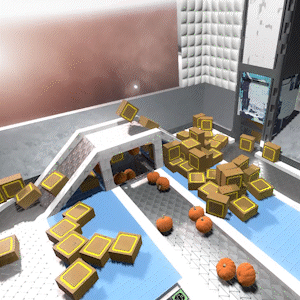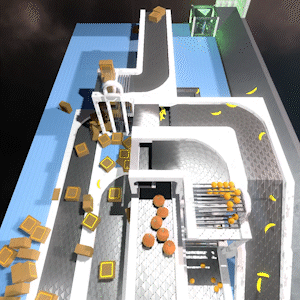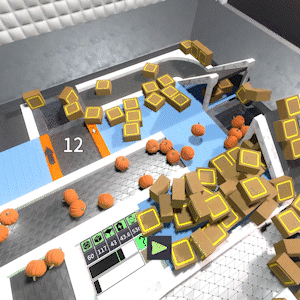packrat Some people call it "cartoonish clarity". Exaggeration to make things feel natural. It's incredibly ironic.
It sounds somewhat silly when you put it like this. But. This "clarity" is part of a very general design principle that, for the lack of a better term, I named "experience condensing". Thorough utilization of this principle is essential for good game design, especially for "realistic" games. The principle could be formulated like this: Condense and amplify all aspects of reality that are fun, feelgood and flowy, minimize or eliminate all that is opposite of that. A simulated experience of the world needs to be heavily condensed in order for simulation to "work" as a fun game.
Experience condensing can be applied to almost any design element, from overarching things to small details; space, time, dimensioning, movement, narration... Here are some examples:
- Your first village in a typical RPG consisting of couple dozen houses and 50 inhabitants is really only 3 houses, a merchant and few additional npcs.
- That epic, vast, open world map is in fact only a kilometer or two wide, unrelated world-changing events pop-up mere 50 meters one from another.
- A 24 hour "realtime" day/night cycle actually completes in about 15 minutes. Something that feels like an hour long task takes only a minute and half to finish.
- A vehicle needs to go 500 kmh in order to feel like it's going 200
- Your character is restored to optimal health, mere seconds after ingesting some pills, instead of recovering in bed for a month, or at least waiting for cure to enter the bloodstream.
etc...
Imho, this is one of the crucial game designs concepts. I didn't really encounter any theorist articulating it clearly. Game designers employ a lot of condensing intuitively though. Once you're aware of this, and start analyzing games with it in mind, it becomes obvious how condensed, fake and cartoony most game worlds actually are, while at the same time successfully sucking you into their "realism". It's just magical.
To bring this back to the topic of physics simulation; you never want realistic physics to run your game entirely. It will bring in dull parts of simulated reality, because a lot of physical reality is inevitably boring. That's why people play games, to escape tediousness of reality. Instead you need to keep feelgood parts of what the physics has to offer, and eliminate all of the clunky pedestrian stuff. Condense the simulation by replacing boring correctness with flowy fakery. The aim is to maximize overall feelgood factor of the experience.






 I am no artist- but here's an attempt to color belts by height
I am no artist- but here's an attempt to color belts by height
